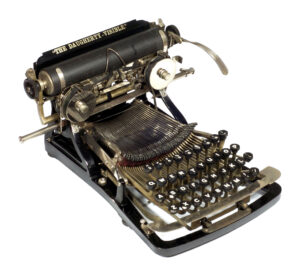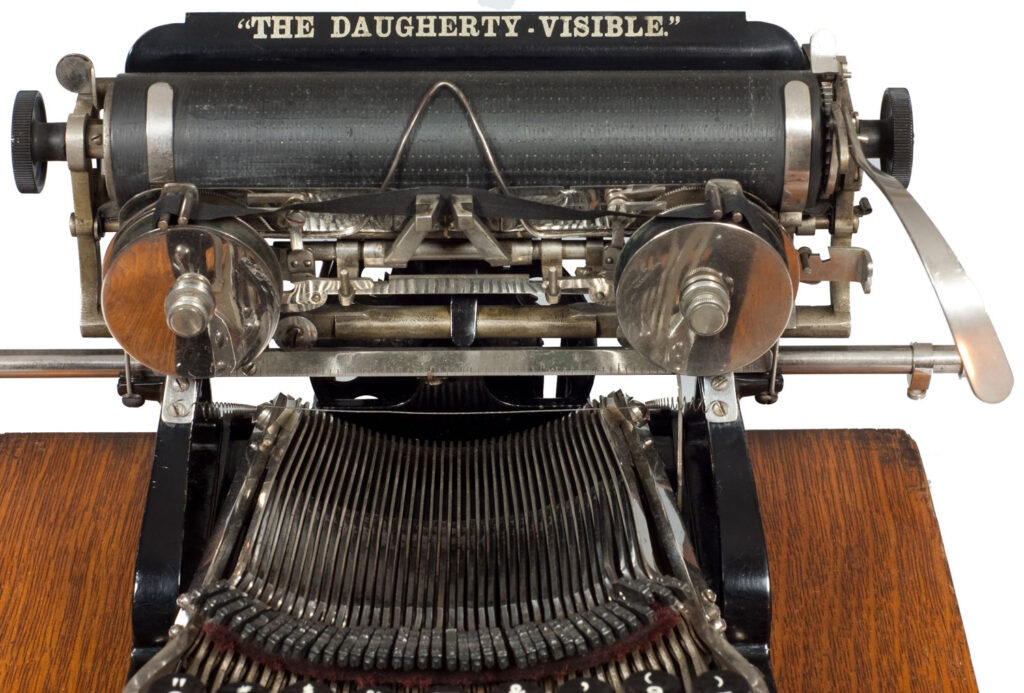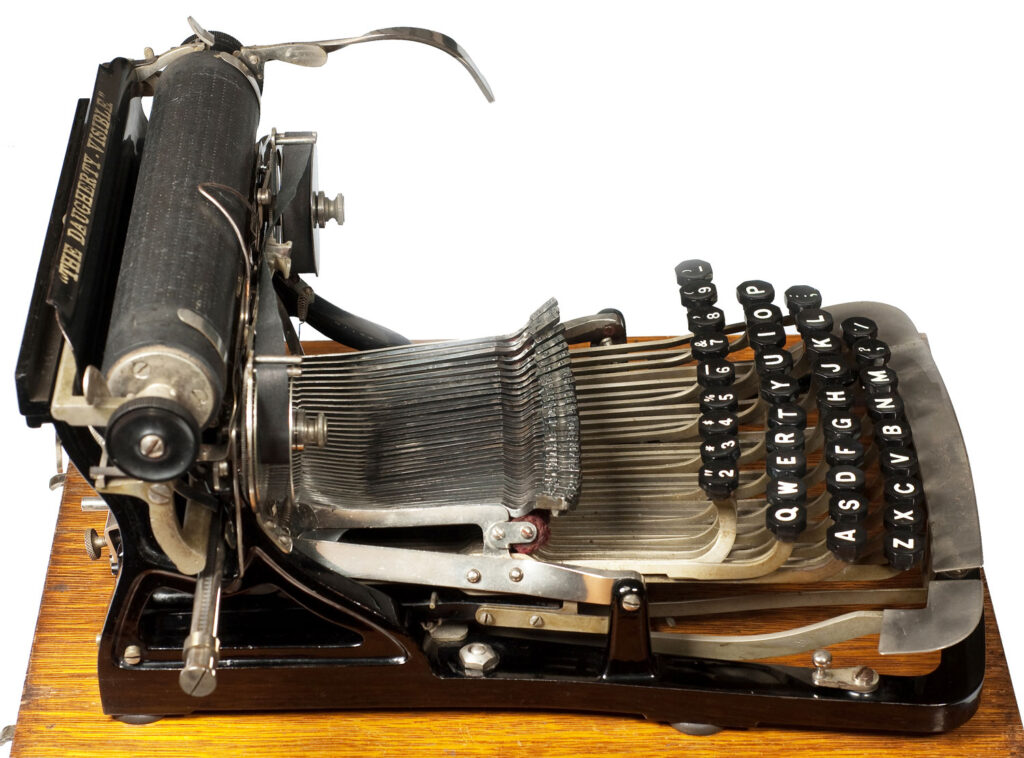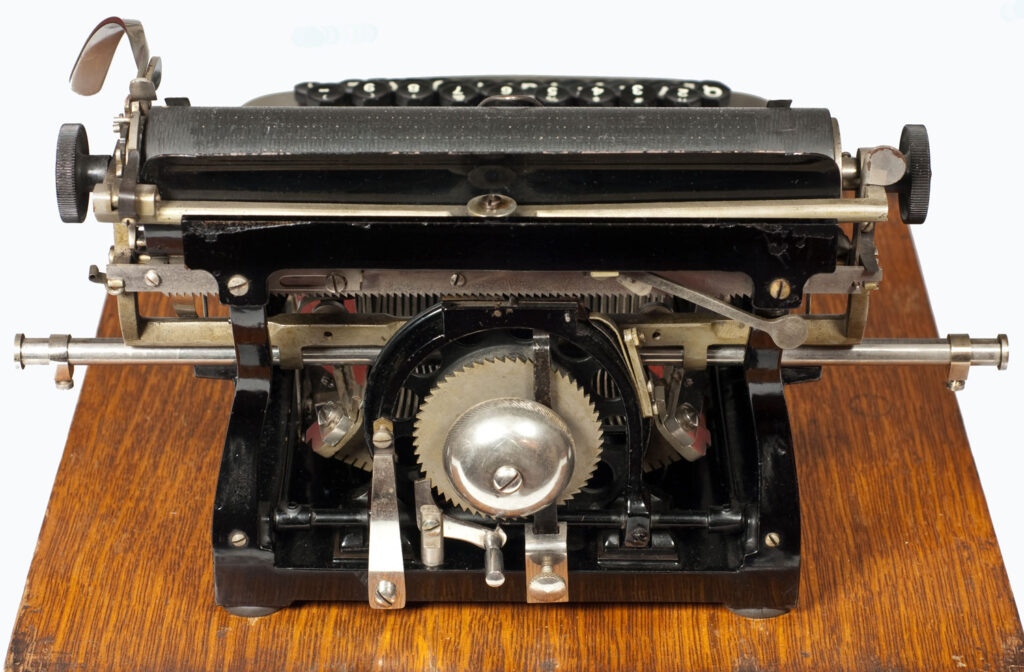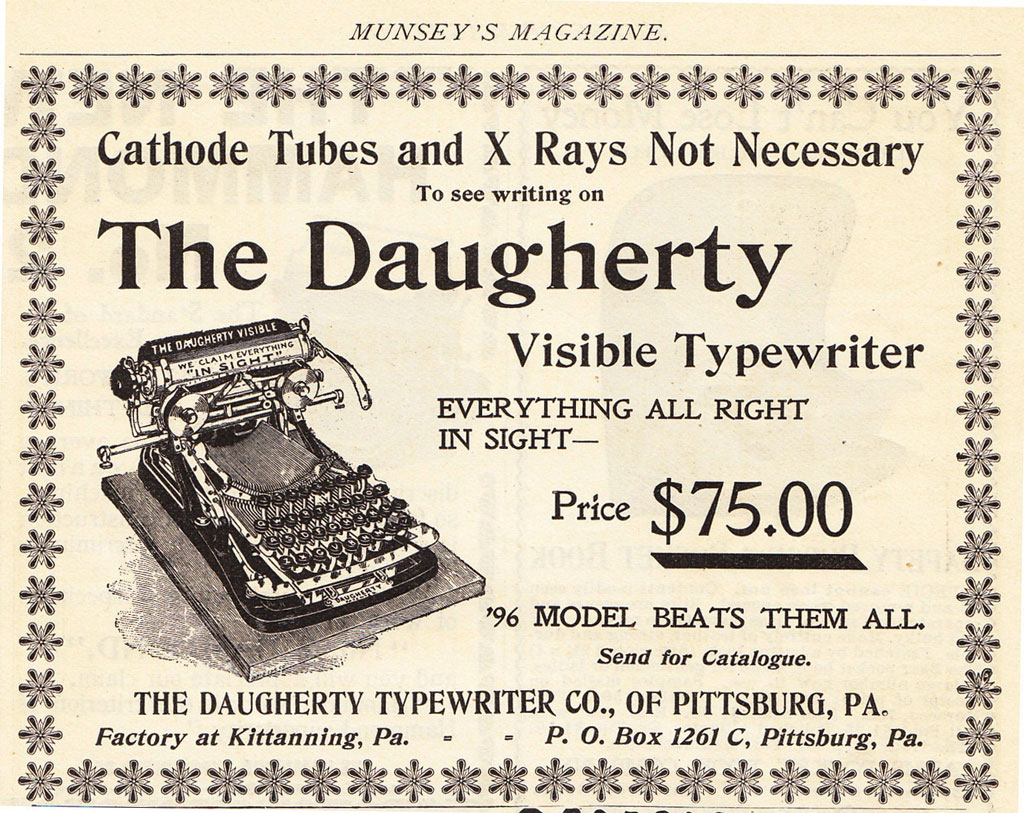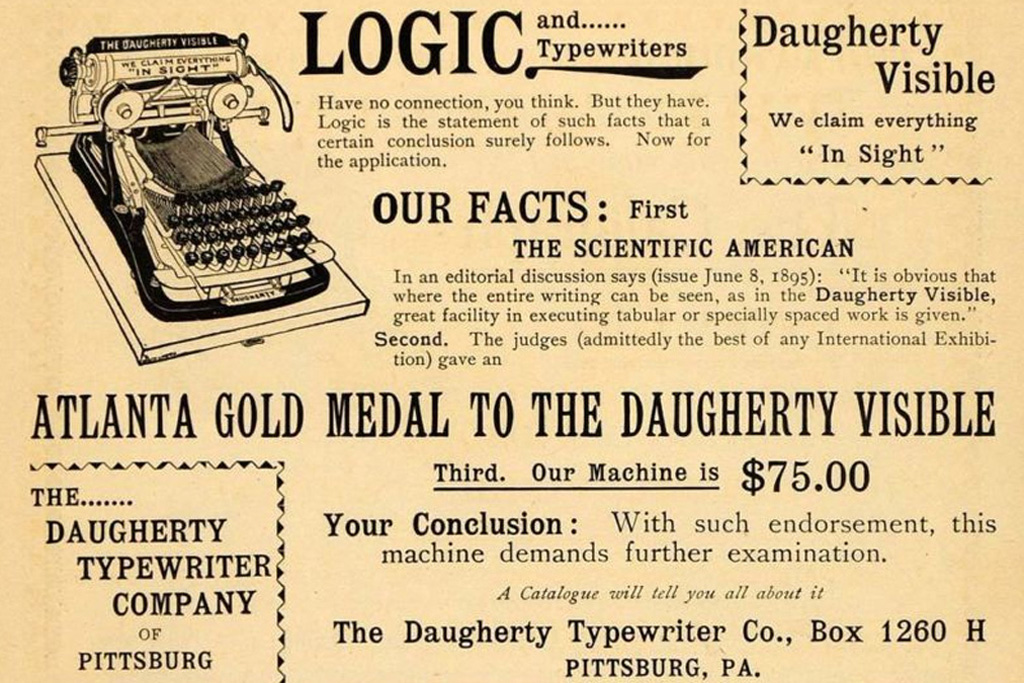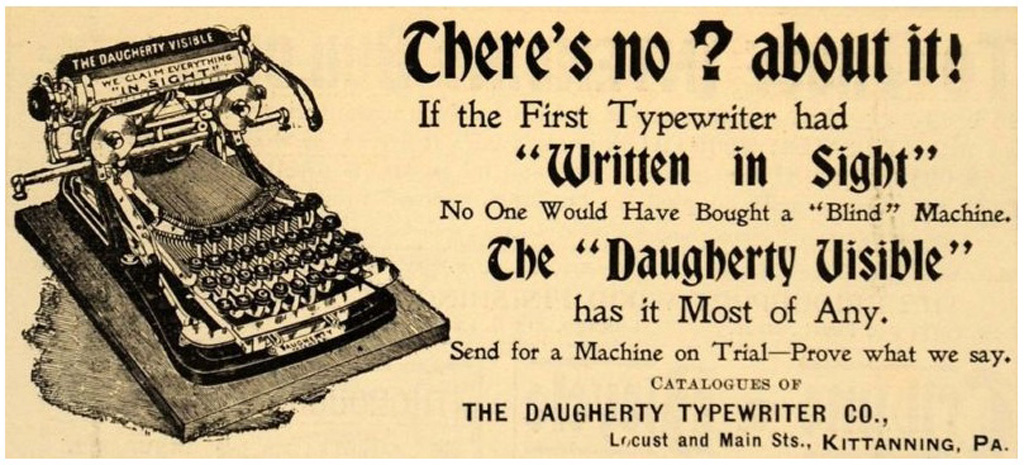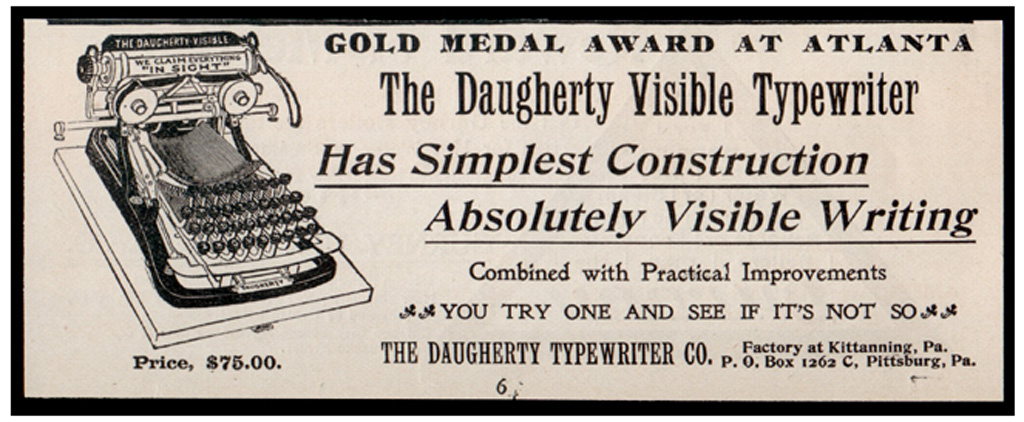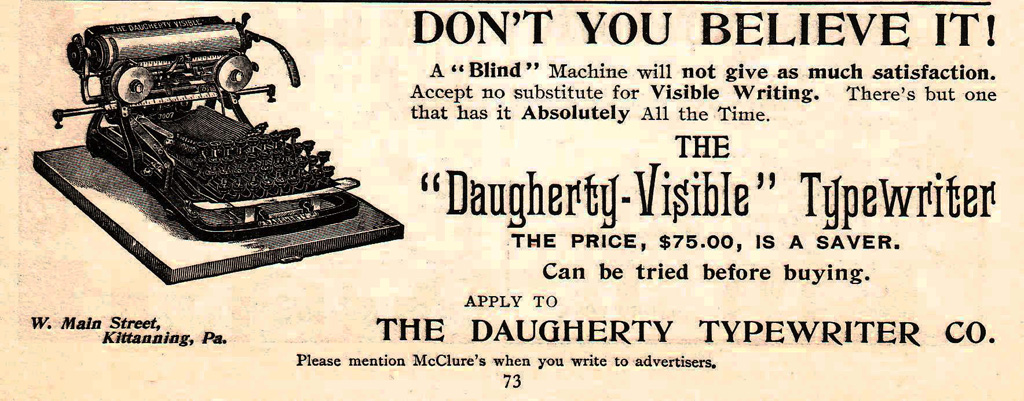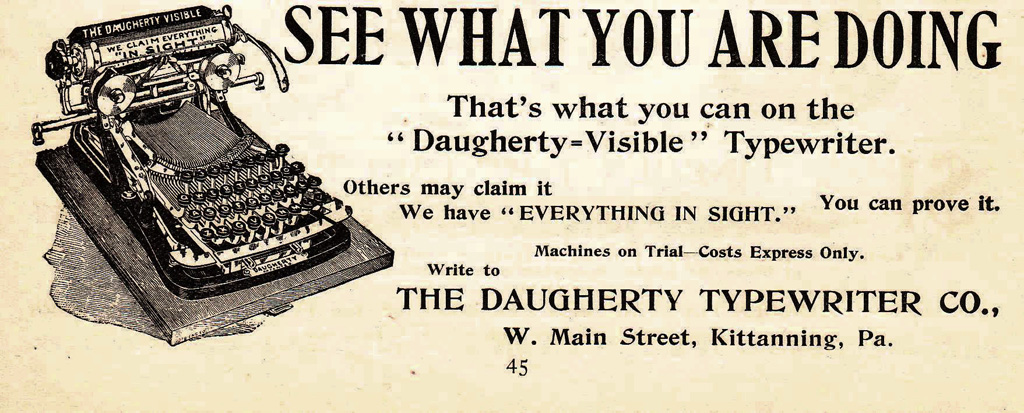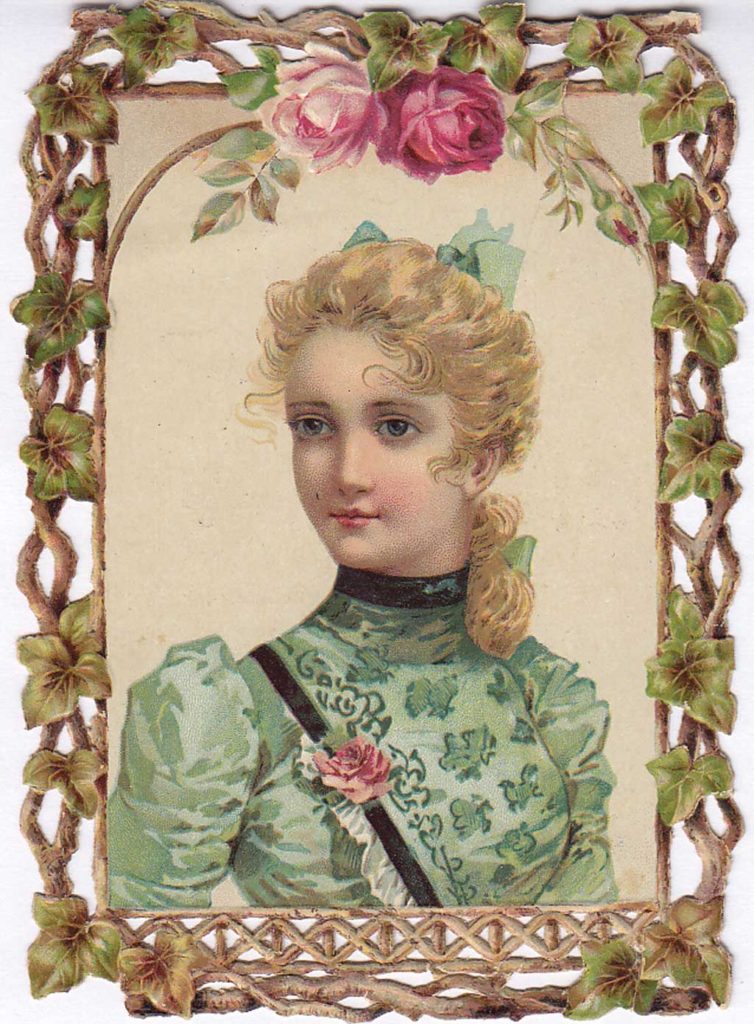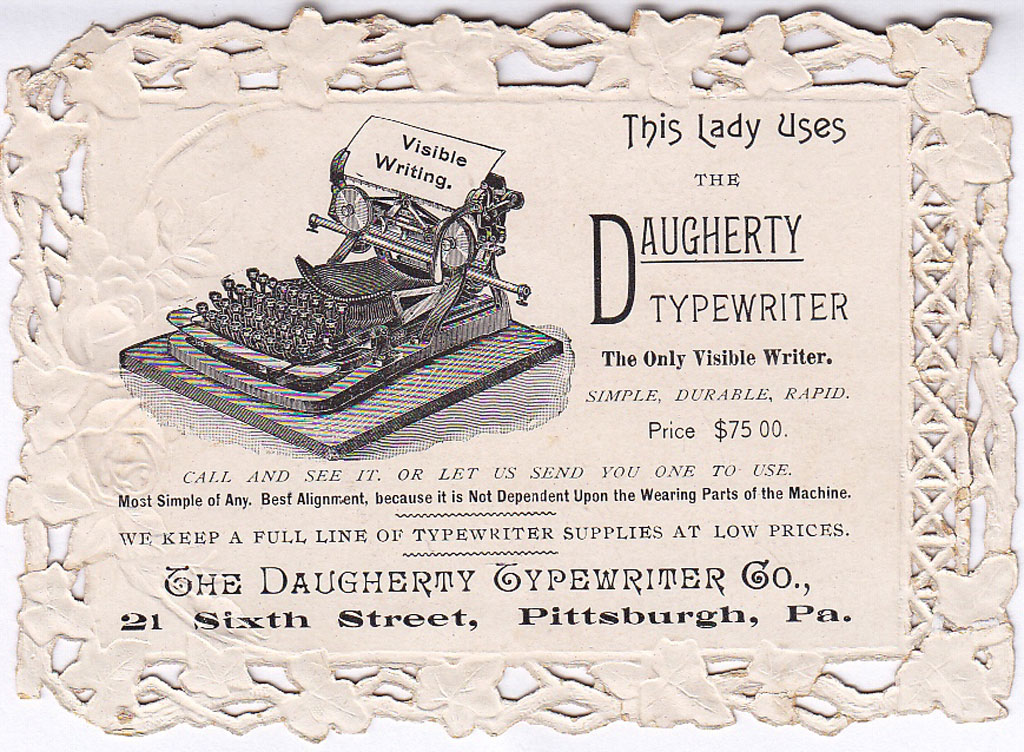The Daugherty is an elegant typewriter that pioneered the essential design elements of the modern typewriter: four rows of straight keys, a single shift key, and, most importantly, typebars that strike the front of the platen, allowing the user to see what they’ve typed.
This configuration, with the typebars arranged in a semi-circle below and in front of the carriage, was a revelation that had eluded many otherwise ingenious typewriter pioneers. It’s quite remarkable that this approach was so difficult to recognize, especially given that other typewriters, such as the Franklin, among many, had a similar semi-circular typebar layout but failed to position it in the most effective location.
Though the Daugherty achieved only modest commercial success, it definitively answered a critical question in the evolution of typewriters: where is the best place to position the typebars? Just a few years later, in 1896, Franz Wagner would introduce the milestone Underwood typewriter, incorporating the same key design principles first seen on the Daugherty but in a far more refined and efficient machine. The Underwood would go on to become the most famous typewriter in history, quickly bringing an end to the wide variety of inventive, often idiosyncratic, typewriter designs of the 1880s and 1890s. The standard had been set for the next century.
“DON’T YOU BELIEVE IT! A Blind Machine will not give as much satisfaction. Accept no substitute for visible writing. There’s but one that has it Absolutely all the Time. The Daugherty – Visible Typewriter.”
“SEE WHAT YOU ARE DOING. That’s what you can on the Daugherty-Visible Typewriter.”
